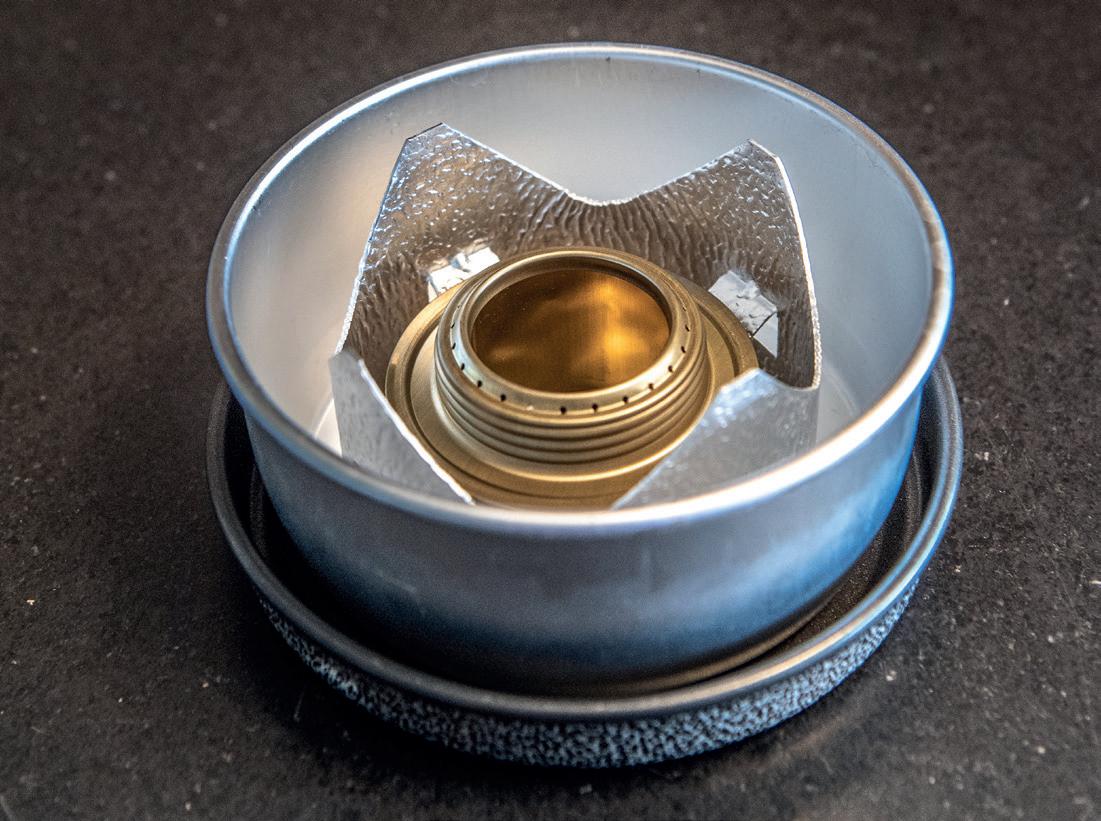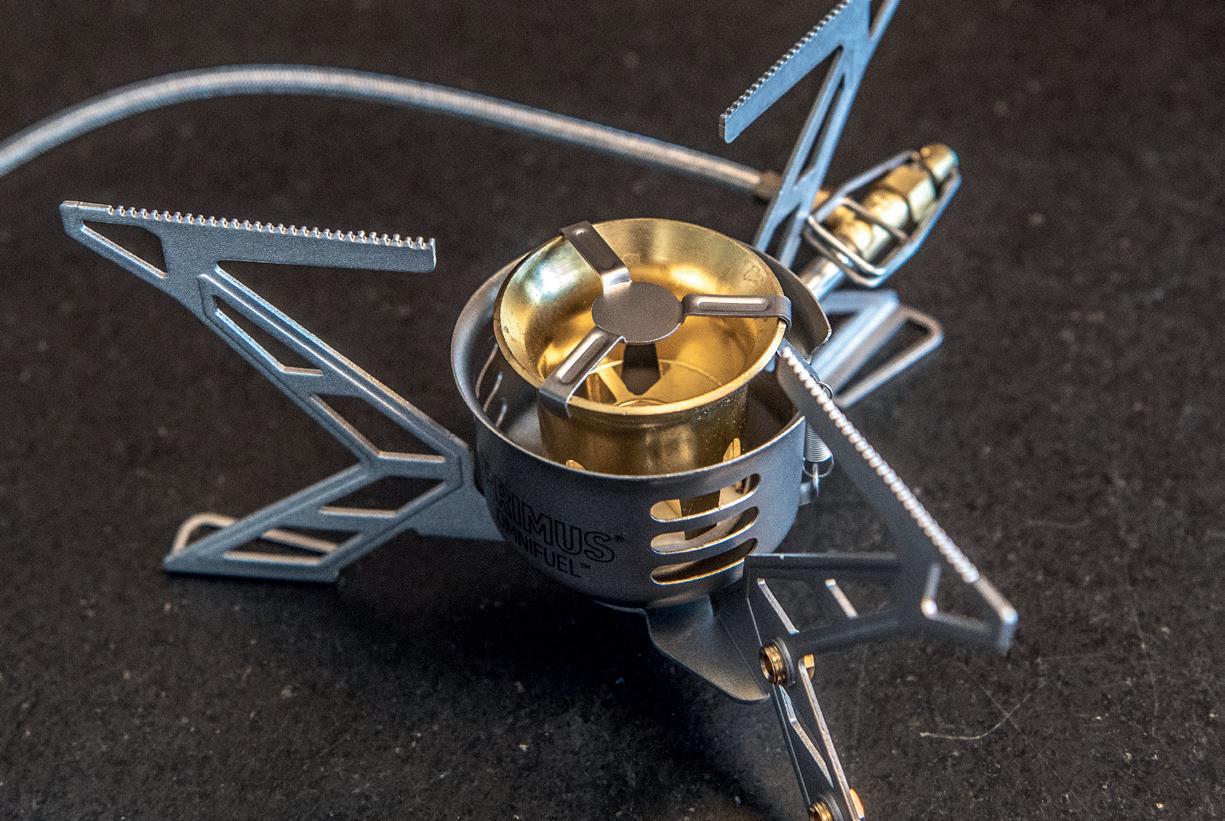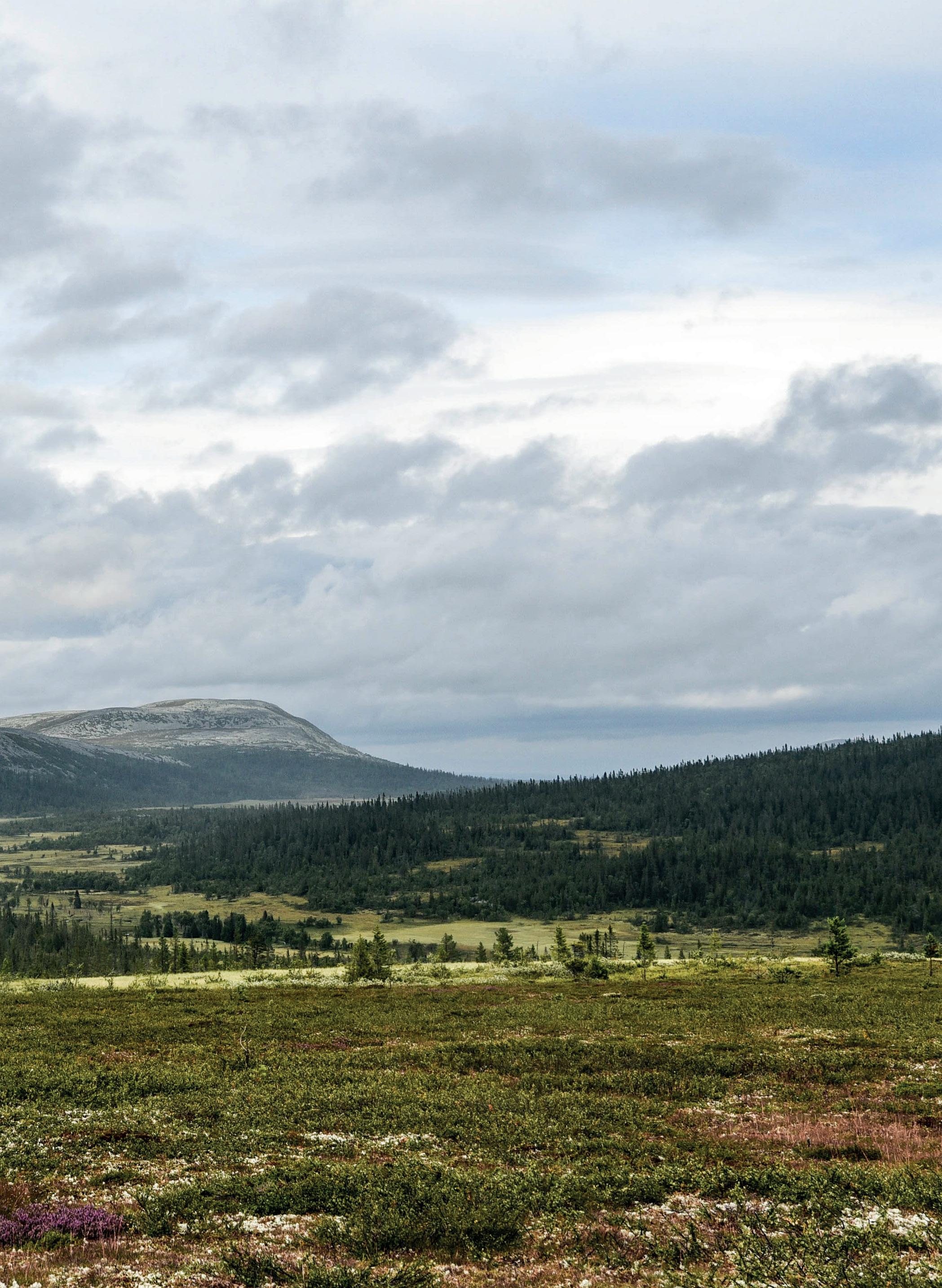
8 minute read
A Stoverview
OUR GUIDE TO CAMP COOKERS
Text: Anna Kernell / Photo: Emelie Voltaire
Advertisement
What could possibly beat a meal that's cooked and enjoyed in a leafy corner of the forest or on a mountain with majestic views? Not much. Perhaps the journey there? Is it the fresh air, or a sense of following in the footsteps of our ancestors that makes it seem so special? Eating out in harmony with nature just feels right – like we used to do, long before highrise buildings and high-speed broadband were even conceivable possibilities. And, in fact, long before the first camping stoves made an appearance.
Camping stoves from Swedish Trangia, Primus and Optimus rightfully enjoy a good reputation around the world – and have a long history to boot. As early as 1892, Primus created the world's first soot-free kerosene stove, hence their name, which means 'first' in Latin. And when Roald Amundsen became the first person to reach the South Pole in 1911, he was (appropriately) accompanied by a Primus stove! In 1953, Sir Edmund Hillary and Tenzing Norgay carried a Primus stove in their pack when they became the first to climb Mount Everest (and manage to make it back down alive).
Trangia was founded in 1925 and initially made aluminium household pots, but when two weeks' paid holiday became a statutory right in the 1930s, the demand for camping equipment dramatically increased. In 1951, the first prototype was launched and the rest, as they say, is history.
Today, there are a whole host of different camping stoves on offer, which of course, makes it difficult to know which one to choose. But, Hooked has accepted the challenge, and we hope we can help you out!
THE FIRST STEP
Timetoponder
When buying a camping stove, there are two questions you should start by asking yourself: What are you going to use it for? And when are you going to use it?
There's no point in lugging around a fully equipped Trangia if you only intend to make a cup of coffee or satisfy your hunger on a day trip with a pack of instant noodles. Which qualities are most important to you? Light and easy to set up, or stable with smart features which increase the weight? Nowadays, there are alternatives that meet most requirements, but usually you have to prioritise something.
Fuel decision
Buying a camping stove is in many ways a matter of choosing fuel and burner, which in turn depends on the conditions the stove is to be used in. If you go hiking in the woods from spring to autumn, it's really just a matter of taste what kind of fuel you use. When it gets really cold, however, you have to consider more carefully. Then it's usually safest to use petrol, diesel or kerosene. If you're on your way to high altitudes, it's petrol that withstands the cold best. BUT, it's also explosive, so most high-altitude climbers usually use winter gas as it's safer!
Thingtokeepinmindwhen choosing a stove:
• What kind of adventures will you bring it on? • Do you want to be able to use it in the winter? • Will you mostly use it for yourself or for the whole family? • What other requirements do you expect it to meet?
GAS
Gas is one of the most efficient fuels available. It lasts a long time, has a low weight but high heating effect and the stoves are usually easy to use. It's the best option if you want to avoid spill, fuss and soot – and have a stove that can be set up quickly, with an easily controllable flame. It suits those who refuse to wait longer than necessary for an energising cup of coffee or tea; the boil time is considerably faster than that of spirits. We're talking about a difference of about 5-7 minutes.
One disadvantage of gas is that you'll have to carry the entire container if you have some left. Once it's completely empty, you need to hand it in at a special recycling facility. Due to the risk of explosion, you absolutely must not put it in the metal recycling.
The efficiency of gas also tends to drop when the temperature falls a few degrees below zero, but you can boost it a bit by warming up the gas container in a sleeping bag or inside your jacket. If you know that you're going to head out in really cold temperatures, you should switch to winter gas to ensure your stove will work.
+ Easy-to-use + Short boil time

SPIRIT

Spirit stoves are a real classic and one of the cheapest options. You don't have to deal with mechanical parts and external fuel tanks – just pour the alcohol into a small beaker, light it, and it'll burn with a large flame. Another advantage of spirits is that you can easily adjust how much fuel you bring with you and thus shave unnecessary weight off your pack. Since the fuel bottles are plastic, they require much less energy consumption to recycle and are therefore a greener alternative compared to metal pressurised gas containers.
But the burning effect is quite low since the spirit burns completely without pressure, so expect to wait a while if you're going to boil a litre of water. You'll also need to bring quite a lot of spirits with you if you're heading out in subzero temperatures or on a multi-day trip, which will result in a heavy backpack. Other disadvantages are that it can be a bit tricky to adjust the flame, and easy to accidentally spill the fuel and end up with sooty vessels.
+Cheap +Lower-impactrecycling

Findingittrickytochoosebetweengasandspiritburners?
With a Trangia stove you can easily change burners without having to change the entire set.
MULTIFUEL
If you tend to go on various adventures year-round and need a versatile stove, a multifuel stove is the best option; for the simple reason that you can adapt the fuel to your conditions and needs. When travelling by plane you're not allowed to bring any type of fuel with you and it can be difficult to get hold of certain fuels in other countries, which is why a multifuel stove is very practical. Especially since it can be powered by the petrol and diesel that are available at petrol stations around the world.
However, multifuel stoves often cost a lot, so it can be smart to consider how important its features are for you before you lighten your wallet. They are also a touch more complicated to use and do require some practice before you head out.
WOOD BURNER

A wood burning stove is perfect for those who want to be able to quickly and easily start a fire to cook on. There are many versions out there; from neat and simple to heavier and more advanced. One advantage is that since they are a bit bulkier they also function as effective wind protection. Many versions have an integrated heat generator that converts the heat from the fire into electricity. This electricity partly drives a fan that reduces smoke formation and partly charges your phone, camera or lamp via built-in USB ports.
The clever thing about wood stoves is that their fuel can be found on the ground so you don't have to lug gas containers and spirit bottles around with you. However, it can quickly turn into a disadvantage if you can't find suitable wood! The fire must also be actively kept alive, which can be either pleasant or frustrating, depending on the weather and your mood.
+ Versatile + Travel-friendly

+ Natural fuel + Ambience

Where can I use my camping stove?
In Sweden, a storm cooker can be used all year round in most places as long as you place it on a surface that can handle the heat.
If you want to make a fire you must choose the place with care. There should be no risk of the fire spreading and damaging soil or vegetation. Contrary to many people's beliefs, you shouldn't light a fire on or next to rocks or large boulders as they can crack from the heat. Sandy or gravelly ground is often a suitable surface. Remember that you're not allowed to saw or chop down trees and shrubs, nor break off branches from living trees. Pine cones, sticks and branches lying on the ground, however, you can pick up and use as firewood.
What if there’s a fire ban?
Storm cookers with gas or spirit flames are usually permitted in the event of a fire ban, as long as there's no risk of ignition and fire spreading. In the event of a stricter fire ban, they may still be permitted but the ban may also prohibit all lightning of open flames, including gas and spirit flames.
You'll need to keep yourself informed of the local rules and regulations of wherever you're camping or travelling through.

OURFAVOURITESFOR...
ULTRALIGHT HIKES: • Optimus Crux Lite Solo Cook System • MSR PocketRocket 2
LONG WINTER HIKES & EXPEDITIONS: • Optimus Nova Multifuel Cooker • MSR WhisperLite Universal Combo
FAMILY HIKING & ALL-ROUND USE: • Primus Essential Trail Stove • Trangia 25-4 UL / 27-3 UL










